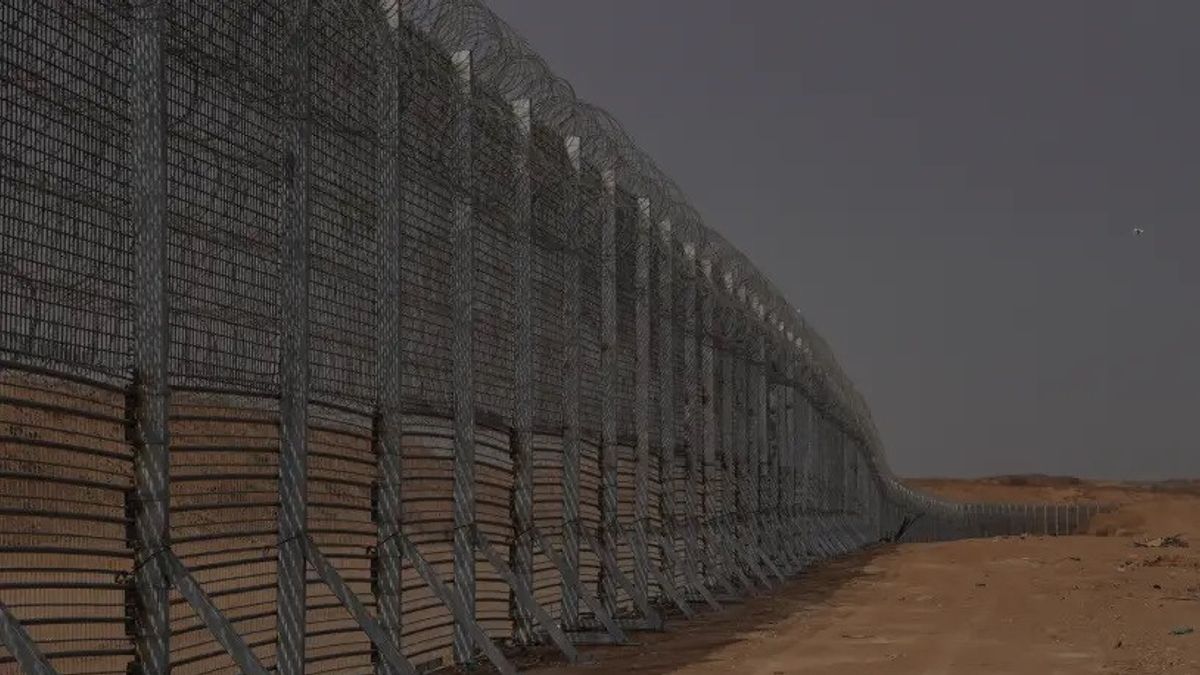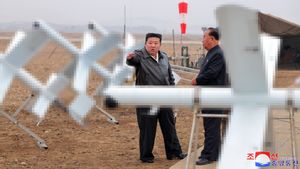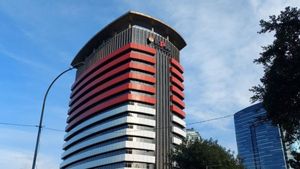JAKARTA - Israel has completed the construction of a sophisticated 65-kilometer-long barrier, separating them from the Gaza Strip, after three years of construction and several violent conflicts during its construction.
After Hamas used its network of offensive tunnels extensively during Operation Protective Edge in 2014, the military proposed building a barrier to eliminate the threat of cross-border attack tunnels. Stops terrorists from Gaza who intend to carry out attacks by infiltrating southern Israel.
"This barrier deprives Hamas of any of their capabilities, and places a wall of iron, censorship, and concrete between it and the inhabitants of the South. Routine life here is our victory, and it is the terror organization's greatest enemy," Defense Secretary Benny Gantz quoted him as saying. The Jerusalem Post December 8th.
Gantz said the military would continue to neutralize any threats that harm Israeli civilians, with an emphasis on rockets.
"We will prevent the transfer of Iranian knowledge and technology to Gaza, and we will continue to thwart any attempt by Hamas to operate its branches in Judea and Samaria or in Israel, attempts that have failed time and time again," he said.
Construction of the guardrail began on Israel's enhanced barrier with the Gaza Strip in 2017. Lasting for three and a half years, including during the March of Return protests and various rounds of war fought between the IDF and terrorist groups in the coastal enclave, the construction cost approx. NIS. 3.5 billion or equivalent to Rp16,162,145,387,500
"Nowhere in the world has built an underground barrier. It was a very complex project, both operationally and technically. The job was not easy. We went through 15 rounds of fighting, we got shot, and we didn't stop working for a moment," explained the director of Fence Administration Brigadier General Eran Ofir.
"It was a very complex project, both operationally and technically. The job was not easy. We went through 15 rounds of fighting, we got shot, and we didn't stop working for a moment. Today I can tell the residents of the Gaza Strip that there is a barrier, either underground as well as on the surface, with state-of-the-art technology that will prevent infiltration into Israel in the best possible way."
According to the Ministry of Defence, more than 1,200 people from around the world are working on the project at dozens of points along the border. During that time, six concrete factories were also set up there, with 330,000 trucks pouring three million cubic meters of concrete for the project.
"Enough to open a road from Israel to Bulgaria. Another 140,000 tonnes of iron and steel were used in the construction of the barrier, equivalent to the length of a steel wall from Israel to Australia," said Ofir.
The fence includes an underground barrier that runs along the border with Gaza, along with a maritime border wall. It has a sophisticated system of sensors and monitoring devices to detect tunnels, and is combined with a six-meter (about 20 feet) high above-ground fence that is similar to the fence that runs along the Israel-Egypt border.
According to Ofir, there have always been attempts to build tunnels, with during their construction dozens of cross-border tunnels were identified and destroyed. He explained that the barrier did not allow the construction of additional tunnels to infiltrate Israel, with ongoing monitoring to ensure that no other party could infiltrate.

Along with cross-border attack tunnels belonging to Hamas or Palestinian Islamic Jihad, infiltration attempts are common along the border. Many Gazans want to be captured by IDF forces rather than remain in the Gaza Strip, which is on the verge of a humanitarian catastrophe, with a serious economic, social, and infrastructure crisis worsening.
While some would-be intruders were armed, many were returned to the Gaza Strip after questioning, because the military understood they were not trying to attack troops or civilians.
The relative silence in Israel's South has been shattered several times by war, causing residents to interfere with their daily lives and remain close to bomb shelters as they have about 15 seconds to find shelter from rocket and mortar fire. The last war in May saw more than 4,300 rockets and mortars fired at Israel killing 11 civilians.
The military said that due in part to the technology on the fence, the IDF was able to thwart many sorties planned by Hamas and Palestinian Islamic Jihad, including cross-border attacks using tunnels.
Separately, IDF Chief of Staff Lt. Gen. Aviv Kohavi called the barrier an iron wall and a central part of Israel's defense.
“This represents creative thinking, expressing the kind of thinking we are committed to at IDF. A change in the fact that what was before will no longer exist. It's quiet now, but looking at the last few months shows that even the most minor offenses have been handled with passion and will happen in the future, and continuously, and in the past year, especially against Iran."
SEE ALSO:
Meanwhile, Director-General of the Ministry of Defense Major General (Res) Amir Eshel called the barrier one of the most complex engineering projects ever built.
"This is further proof that there is no task that defense agencies cannot do. The barrier has changed the reality in the South, and will lead to a sustained economic and social boom in the communities surrounding Gaza," he said.
To note, about 70,000 Israelis live in more than 50 communities in the Gaza border area. There was a marked increase in people moving to the area in the years following Operation Protective Edge.
The English, Chinese, Japanese, Arabic, and French versions are automatically generated by the AI. So there may still be inaccuracies in translating, please always see Indonesian as our main language. (system supported by DigitalSiber.id)


















